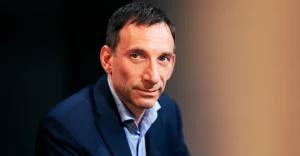
War comes to Russia: How Ukraine's Kursk region offensive is shifting conflict. Breakdown
On Tuesday, August 6, Ukraine’s Armed Forces pulled off a bold large-scale military operation, successfully crossing the Russian border in the Sumy region and advancing deep into the Kursk region. This offensive, the most significant Ukrainian push into Russian territory since the war began, made it clear to the world that the "red lines" Russia has long touted were just empty threats
Content
- The context of the Ukrainian offensive in the Kursk region and how it stands apart from previous raids
- A timeline of the Kursk offensive
- What Ukraine stands to gain from the Kursk push and the potential risks involved
A century ago, after the fall of the Russian Empire, Ukrainians in what are now the Kursk and Belgorod regions were strong supporters of the Ukrainian People’s Republic (UNR). This area, known as Slobozhanshchyna, has deep Ukrainian roots, with settlement dating back to the Cossack era. The fact that cities like Sudzha and Belgorod even served as capitals of Soviet Ukraine for brief periods underscores the Ukrainian heritage of these lands. During the Soviet era, the Kursk and Belgorod regions were incorporated into the RSFSR, later remaining part of the Russian Federation. Though Ukraine has never laid claim to these lands, Russia’s aggression since 2014, and especially the full-scale war starting in 2022, has forced a rethinking of both the past and the future borders between Ukraine and Russia.
Espreso will explain the significance and timeline of Ukraine’s military operation in the Kursk region, how the world is reacting, the benefits for Ukraine, and any potential threats.
The context of the Ukrainian offensive in the Kursk region and how it stands apart from previous raids
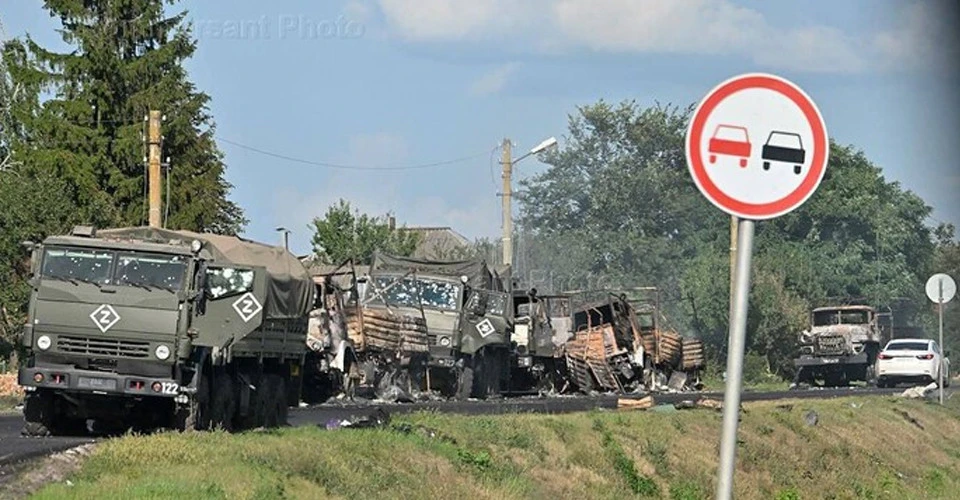
If you’ve been following the foreign media’s coverage of the war in Ukraine this year, you’ve likely noticed a pattern. The headlines are filled with doom and gloom — Russian advances in the east, a society growing weary, uncertainty about when the conflict will end, and the looming prospect of unavoidable negotiations. But something shifted on August 6. A new, unexpected factor emerged, one that could potentially tilt the scales in Ukraine’s favor: full-scale military operations by Ukraine’s Armed Forces on Russian soil, with Kyiv even managing to seize part of Russian territory.
It's crucial to note that Ukrainian authorities and the General Staff have activated a "silence mode" concerning this operation. As a result, most of the details we’ve gathered about the cross-border attack come indirectly — from Russian military bloggers, videos, and photos shared by Ukrainian forces, and reports from foreign media outlets scrambling to find anonymous government sources or offering expert analysis.
Unlike last summer's botched counteroffensive, which was hyped up and widely discussed — so much so that everyone seemed to know where and when it would happen — this time, the Ukrainian command didn’t make the same blunder. The offensive in the Kursk region caught everyone off guard, especially the Russians.
In military strategy, surprise is key. The Chinese strategist Sun Tzu wrote in his classic work, "The Art of War": War is the art of deception. The one who can deceive and outwit the enemy, turning adverse situations into favorable ones, wins the war. This time, the Ukrainian Armed Forces succeeded in strategically outwitting the Russians, seizing the initiative — at least on this front.
While Bloomberg reports that the Russian military command was aware that Ukraine was preparing this operation, they did not relay this information to Russian dictator Vladimir Putin. Russian intelligence noticed the movement of military equipment and the troop buildup near the border, reporting it to the commander-in-chief of the Russian army, Valery Gerasimov. Yet, for reasons unknown, he didn’t take it seriously, allowing Ukrainian forces to enter Russian territory with little initial resistance, catching the under-prepared defense off guard. Gerasimov may not be ousted anytime soon, but as Bloomberg notes, the Kremlin's patience with his approach to the war is wearing thin.
After fighting began in the Kursk region, many foreign media outlets claimed it marked the first time in 80 years — since World War II — that a foreign army had entered Russian territory. However, this isn't entirely true.
In reality, Ukrainian Armed Forces have crossed the Russian border multiple times. Over the past 2.5 years of full-scale war, Ukrainian sabotage groups have repeatedly infiltrated Russian territory, as even the Russians themselves have reported. The numerous explosions at military sites back this up. Let’s not forget the raids by the Russian Volunteer Corps, the Freedom of Russia Legion, and the Sibir Battalion in March-May 2023 in Starodub and Belgorod regions, followed by more incursions in Belgorod and Kursk regions in March 2024. During these events, borders were breached, and several villages were briefly captured. Although Ukraine’s Defence Intelligence claimed these groups operated independently within Russia, it’s clear they are part of the International Legion of the Ukrainian Armed Forces, meaning they are effectively part of the Ukrainian military, with their actions coordinated by the Ukrainian General Staff.
But this recent lightning-fast August breakthrough in the Kursk region by the Ukrainian Armed Forces is different from all previous Ukrainian actions on Russian borders. This time, it wasn’t just auxiliary forces — it was several combat brigades. According to Forbes, at least three brigades, each with up to 2,000 soldiers, are participating in this offensive: the 22nd and 88th Mechanized Brigades and the 80th Assault Brigade. The involvement of the 80th Airborne Assault Brigade, one of Ukraine’s best, shows the scale of this Ukrainian operation north of the country’s border with Russia.
According to Forbes: “The Ukrainian operation that kicked off on Tuesday is different. At least three brigades, each with up to 2,000 troops, are involved: the 22nd and 88th Mechanized Brigades and the 80th Air Assault Brigade. Artillery, drones and air defenses are playing critical supporting roles. It’s more clear by the hour that what’s happening in Kursk isn’t a raid: it really is an invasion. That the Ukrainians are pouring significant resources into this invasion doesn’t guarantee its success, of course. There might be 10,000 Ukrainian troops in and around in the invasion zone. The Russian Northern Grouping of Forces, which fights along the border zone, has around 48,000 troops.”
The publication also notes the new style of warfare by the Ukrainian forces, where the first step is neutralizing Russian drones, followed by using high-precision Ukrainian drones that, in swarms, attack Russian troops. Then, Ukrainian mechanized units move in to secure new trenches, radio jamming devices are brought forward, and the cycle repeats. The Institute for the Study of War also noted that Ukrainians are using new and innovative tactics, where small armored units bypass Russian defenses, strike at the rear, and then retreat.
The New York Times reported that even more brigades were involved in the Ukrainian Armed Forces' military operation in the Kursk region. Their sources suggest that military analysts have identified at least four brigades participating, marking a rare instance of successful large-scale maneuvers by Ukrainian forces.
“It seems to be a fairly well-coordinated and planned combined armed operation,” said Franz-Stefan Gady, a Vienna-based military analyst. “You have electronic warfare assets that were deployed to jam Russian command and control. You have air defenses that were moved in to create air defense bubbles around the Ukrainian advance. And then you have fairly effective mechanized formations moving forward at a fairly steady pace.”
Dara Massicot, a former Pentagon analyst specializing in Russian military capabilities, told NPR, the largest U.S. radio network, about four or five Ukrainian brigade units, which she estimated to consist of 10,000-12,000 troops. This includes the Unmanned Systems Force, a new military branch responsible for drone operations.
Additionally, it’s important to remember that such operations also rely on the support of HUR and SBU special forces, as they require extensive reconnaissance and precise strikes on enemy positions.
Experts unanimously agree that this direction of attack was chosen due to the weak defensive lines in the area. The Russian military mainly relied on units already stationed nearby — conscripts and irregular formations lacking combat experience, unlike the battle-hardened troops fighting in Ukraine. It’s also crucial to consider that the Russians were preparing to open another front in the Sumy region, so the Ukrainian Armed Forces preempted them to avoid a repeat of the situation in the Kharkiv region in May.
A timeline of the Kursk offensive – key details
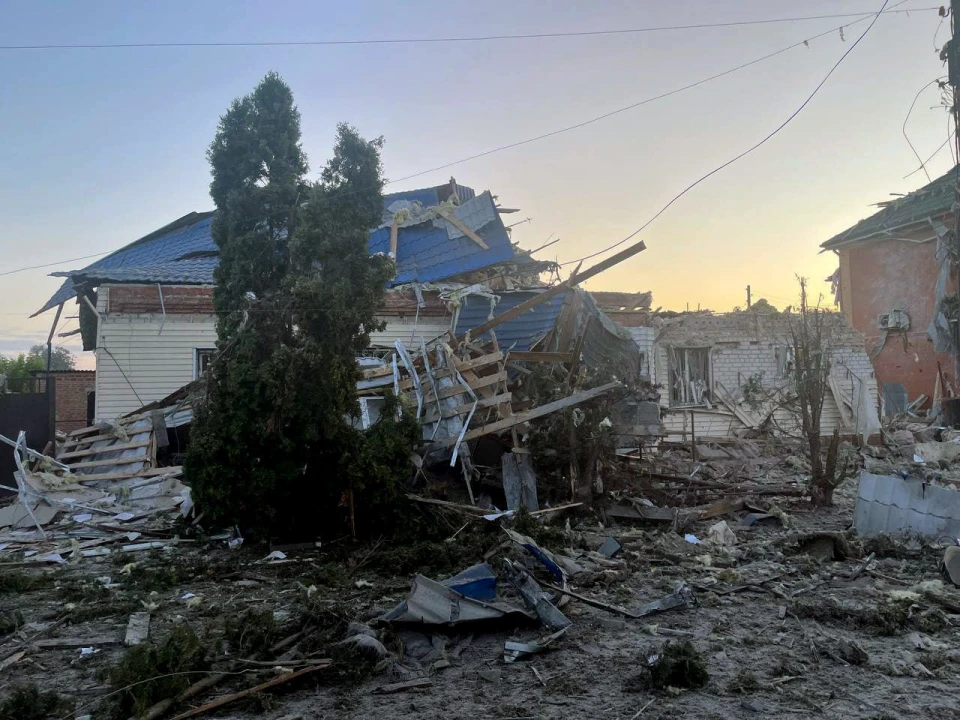
Photo: Kursk region governor Alexey Smirnov
As the Ukrainian operation continues, the General Staff of the Armed Forces of Ukraine remains tight-lipped about any details or actions of Ukrainian soldiers on Russian soil. Consequently, the specifics of the Kursk operation's timeline are unclear — what we do have are reports from Russian military personnel and foreign media, but the general picture could look something like this:
August 6
In the morning, several groups from Ukraine's Armed Forces crossed into Russian territory in the Sudzha and Korenevo districts. Russian troops and aircraft were immediately deployed to counter the attack. According to Russian sources, several hundred Ukrainian soldiers, 11 tanks, and over 20 armored vehicles participated in the clashes. The main thrusts of the Ukrainian offensive were directed at the Oleshnya and Nikolaevo-Darino areas.
By 10:01 a.m., the governor of the Kursk region claimed that Russian forces had halted the breakthrough. Units of the Ukrainian Armed Forces, riding in foreign Stryker armored personnel carriers, reportedly made it to the Rylsk-Sudzha highway. Ukrainian media shared a video showing captured Russian soldiers and a photo of a destroyed Ka-52 helicopter.
Skirmishes continued on the highway near Sudzha. Russian forces fired on Ukrainian positions, stating that they had pushed the Ukrainian troops back across the border. However, by around 9:30 p.m., photos of destroyed Russian tanks near Sudzha surfaced. By evening, Ukrainian forces reportedly controlled several villages near the border.
August 7
On the morning of August 7, Ukrainian troops were in 11 settlements and advanced up to 15 km into Russian territory, with a front width of about 10-11 km. A Russian Mi-28 helicopter was hit by an FPV drone.
Ukrainian forces approached Sudzha, where much of the population had been evacuated due to shelling. Russian authorities reported that the city is under operational encirclement, and Ukrainian troops took control of the Sudzha gas measuring station, the last functioning point for the pipeline that sends Russian natural gas to Europe via Ukraine.
In the afternoon, Russian dictator Vladimir Putin called an emergency Security Council meeting, labeling these events "a large-scale provocation." Ukraine did not comment, but the Sumy region authorities announced the mandatory evacuation of 23 settlements due to the threat of shelling, affecting around 20,000 people.
It was also reported online that the Armed Forces entered Korenevo, a town 25 km from the border, where Ukrainian troops captured several dozen Russian soldiers. In the evening, famous Russian military propagandist Yevgeny Poddubny was injured in an FPV drone attack.
The Telegraph reported that Ukrainian Armed Forces captured more territory in the Kursk region in less than 48 hours than they did during the entire summer counteroffensive of 2023.
August 8
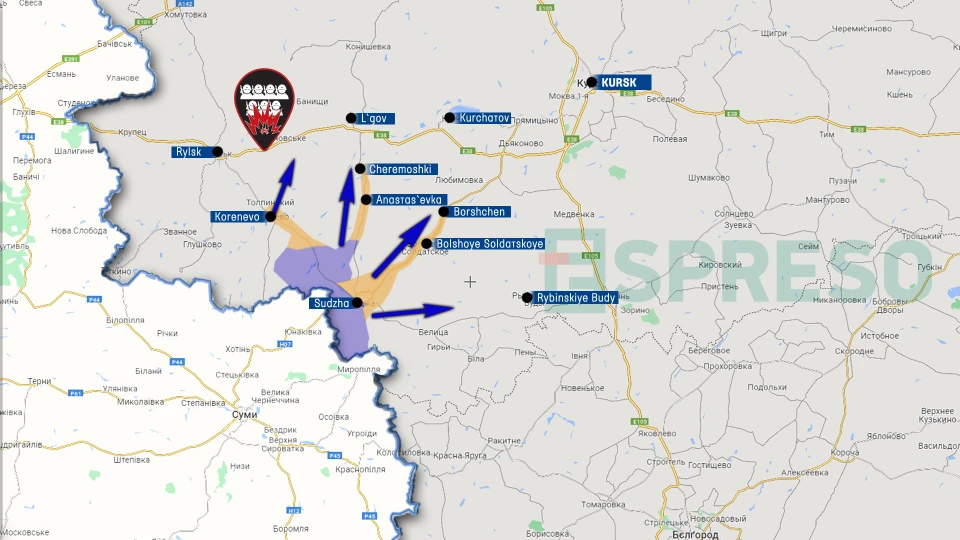
Foreign media reports say that on the morning of August 8, Ukrainian forces breached two lines of Russian fortifications in the Kursk region, costing Russia 15 billion rubles. By morning, Ukrainian troops had taken control of the western part of Sudzha and nearby roads, where skirmishes were ongoing. Some units reached the settlements of Ivnitsa and Anastasyevka, advancing 23-26 km into Russia.
On the third day of the offensive, the combat zone grew to 430 square kilometers, which is larger than the city of Dnipro. By the afternoon, Ukrainian forces had captured several more villages - Kozacha Loknya, Bogdanovka, 1st Knyazhy, and 2nd Knyazhy – where skirmishes also occurred. Ukrainian troops were spotted 35 km from the border. Russian military bloggers said, "Sudzha is practically lost for us," and claimed Ukrainian forces were advancing toward Lhov, just 25 km from the Kursk NPP.
August 9
Ukrainian forces captured around 100-200 square kilometers of territory (about the size of Lviv), pushing about 10 km from the border. The combat zone expanded to 600 square kilometers. Reports in the morning mentioned a damaged Russian troop column near Oktyabrskoye. A HIMARS strike hit 15 trucks, causing heavy casualties among Russian soldiers (in the hundreds).
That day, Apti Alaudinov, commander of the Chechen unit "Akhmat," admitted for the first time that Ukrainian forces control settlements along the border, and his units had avoided direct clashes, expecting "reinforcements." It was also reported that Russian reinforcements started arriving in the Kursk region, where fighting for Sudzha continued, including heavy artillery being deployed.
Russian troops also took positions to protect the Kursk nuclear power plant after reports of nearby fighting. All roads to the station were blocked. Ukrainian drone strikes in the Kursk region damaged infrastructure, causing widespread power outages.
Additionally, reports surfaced that Ukrainian troops had seized ammunition warehouses in Sudzha, which could have been used for attacks on the Sumy region. A Ukrainian drone also shot down a Russian helicopter.
The Washington Post reported that fully regaining control of the Kursk region might take a long time, potentially up to a year.
August 10
On the fifth day after the border breach, Russia set up a counter-terrorist operation in the Bryansk, Kursk, and Belgorod regions because of the threat from Ukraine. This means more security, restrictions on movement, document checks, and phone monitoring. The last time this was done was in Moscow, Moscow, and Voronezh regions during Yevgeny Prigozhin's brief rebellion last summer. Also, 76,000 Russians were reportedly evacuated from the combat zone in Russia.
On the same day, the International Atomic Energy Agency said they are “monitoring the situation related to the military activities reported near the Kursk nuclear power plant.” Belarus also took action: the Defense Minister ordered troops to the border with Ukraine.
Ukrainian forces also made a small push into the Belgorod region. Specifically, the 252nd battalion fought in the village of Poroz, Graivoron district, and claimed to have captured it. Reports came in about the destruction of another Russian convoy in the Kursk region, and a Russian fighter was also hit.
Though Russian media reported on the evening of August 10 that the combat zone in the Kursk region had expanded to 650 square kilometers, The New York Times said the situation in Kursk had supposedly stabilized. Ukrainian advances north were reportedly slowed by Russian reinforcements. Pasi Paroinen, an analyst from the Black Bird Group, a Finland-based organization that analyzes satellite imagery and social media content from the battlefield, told the publication that evidence shows Moscow has managed to slow down major Ukrainian advances into Russian territory.
“We’re now entering the phase where the easy gains have been made,” he said of Ukraine’s initial advance. “This phase, for the first three days, saw the most rapid movement,” he added. “And yesterday, I think, we started to see the effects of the Russian response.”
What Ukraine stands to gain from the Kursk push and the potential risks involved
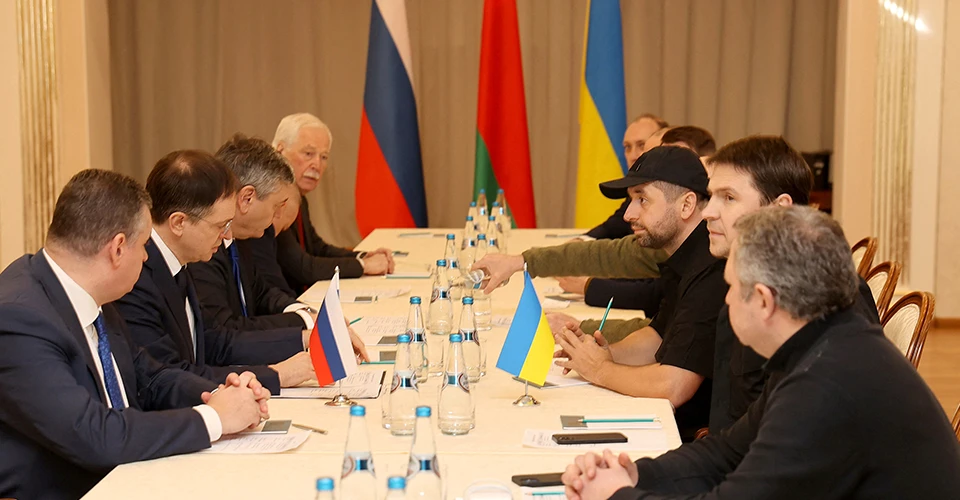
Photo: BelTA, negotiations in Belarus, February 2022
The full-scale war has been ongoing for over 2.5 years. During this time, the world got used to the idea that the Russian army mainly advances while the Ukrainian army defends. The Armed Forces of Ukraine were able to push the invaders out of northern Ukraine and protect the capital. Later, they conducted a swift counteroffensive in Kharkiv and also liberated Kherson. However, recent successes have become more localized. Throughout 2024, the Russians have been making steady, if not daily, advances in the Donetsk region and, since May, in the Kharkiv region. Therefore, the unexpected move by the Ukrainian General Staff, capturing several hundred square kilometers of territory in just a few days — though it was Russian, not Ukrainian territory — reminded the world that Ukraine is capable of launching successful attacks and reclaiming land from the Russians.
The Ukrainian offensive into the Kursk region caused a significant stir in the global media, bringing the topic of Ukraine’s war with Russia back to the front pages. The most interesting topic now is the debunking of Russian myths and the exploration of new strategic opportunities for Ukraine, which come with their own potential risks.
The main myths debunked by this Ukrainian offensive are:
Impenetrable Russian borders. It was once believed that the Russian border was secure from significant incursions. This offensive showed that Ukrainian forces can successfully penetrate Russian territory and hold significant positions. It also revealed that Russian forces are not always quick to respond to such threats, casting doubt on the effectiveness of the Russian army in defending its vast territory, which has many defense gaps.
Red lines and nuclear response. Russian leaders, including Vladimir Putin, had repeatedly warned that attacks on Russian territory, including important infrastructure, could provoke a nuclear response. These warnings were intended to deter attacks. However, Ukrainian forces have shown that Russia uses nuclear threats more as a scare tactic to advance its interests, rather than as a genuine strategy. As The Guardian noted, Putin’s red lines are just words, and Russia is not as strong as it was believed to be.
International reaction to Western weapons in Russia. In 2022, Western politicians might have sharply criticized or even threatened to halt supplies if their weapons were used in Russia. Initially, allies were wary of "escalating the conflict." However, as Ukraine’s use of Western weapons has progressed — from tanks to airplanes and long-range missile strikes on occupied Crimea, and now on Russian territory — world leaders have adjusted their stance. They now acknowledge Ukraine’s right to defend itself as it sees fit, provided it aligns with international war rules. As a result, when the Ukrainian offensive in Kursk began, the USA and the EU did not express concern but rather supported Kyiv’s right to strike enemy territory with Western weapons.
What are the main benefits of this unexpected attack for Ukraine:
A strategic advantage and a public slap to Putin. An attack on the Kursk region may shift Russian troops' attention and resources from other front areas like Donbas and Kharkiv. The transfer of troops to Kursk could make it easier for Ukrainian forces to defend their positions. It also demoralizes the Russian leadership and public, who believe in Putin's invincibility. The more successful the Ukrainian operation in Kursk, the more it undermines Putin’s and the Russian command’s authority among Russians. If the government can’t protect them and sends troops to Ukraine instead, are its actions justified?
Boosting Ukrainian morale. For a long time, the news was dominated by discouraging reports about Russian advances. However, successful operations on Russian soil remind Ukrainians that their Armed Forces can carry out major attacks. Videos and photos of Ukrainian soldiers capturing Russian troops, destroying their convoys, and removing Russian flags from buildings boost the fight's motivation. It also raises morale among Ukrainian troops, showing that Ukraine can strike back even in the most unexpected places.
Strengthening Ukraine's diplomatic positions. A successful offensive can increase international support for Ukraine by showing its resolve to defend its territory and counter aggression effectively. This reduces the impact of Russian "red lines" regarding nuclear weapons, opening up new opportunities for support in targeting Russian military facilities.
Creating a "sanitary zone" for the Sumy region. This offensive has allowed the Armed Forces to outpace Russian troops and disrupt their plans to attack Sumy. It reduces the risk of sudden attacks on Ukrainian border towns and villages if Ukrainian forces can maintain a long-term presence in Kursk.
Control over Russian territory as leverage. There has been talk of possible talks between Kyiv and Moscow for months, especially with the possibility of Donald Trump returning to power in the USA, who promised negotiations before year-end. Kyiv has also confirmed that Russia will be invited to the upcoming second Peace Summit. Owning Russian territories gives Ukraine leverage in these negotiations. The Russian Federation might be forced to make concessions to regain its territory, allowing Kyiv to demand the return of captured Ukrainian lands in exchange for a retreat from Russian soil.
Strengthening positions in prisoner exchange negotiations. If territory exchange doesn’t work out, Ukraine can aim to bring home as many Ukrainian hostages and prisoners as possible. Capturing a large number of Russian military prisoners during the Kursk offensive is a significant advantage. It provides additional leverage for more exchanges of Ukrainian prisoners held by Russians and may facilitate the release of civilians detained in occupied territories.
In addition to the obvious advantages, there are also potential risks:
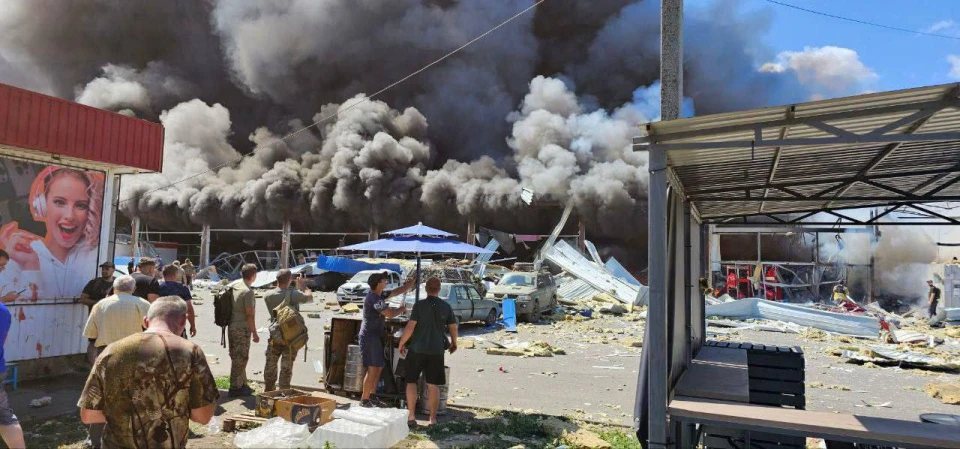
Photo: Andrii Yermak, Russian strike on Kostiantynivka, August 9
Expansion of the front and increased needs of the Armed Forces. Extending the fighting into Russian territory could stretch Ukrainian resources and complicate front management, possibly hurting overall military effectiveness in the future. The front line is already about a thousand kilometers long, and now it’s grown by dozens more kilometers into Russian territory. Plus, using large Ukrainian forces in the Kursk region could mean other front areas might face even more resource shortages. Many Western experts see this offensive as a risky move that could bring both benefits and new problems. It all depends on the final outcome and what the Ukrainian leadership aims to achieve with this surprise attack. Right now, the Ukrainian authorities are keeping quiet, giving only vague hints. For instance, on August 8, during the "Army+" app launch, President Volodymyr Zelenskyy said, “The Ukrainian army knows how to surprise and achieve results... it always succeeds when it rejects the outdated, acts outside the norm, and clearly carries out its plans for Ukrainian success.” What’s planned remains unclear. On the evening of August 10, Zelenskyy was slightly more specific, saying the Ukrainian army is focused on “forcing the war onto the aggressor’s territory.”
Russian response: new massive missile attacks on civilians. Naturally, actions provoke reactions. The Russians, who have shown from the start of the full-scale war that they’re willing to kill and torture Ukraine’s civilians and destroy infrastructure, might intensify their attacks. They could continue to target high-rise buildings, shopping centers, hospitals, and other public places. For example, on August 9, the Russian Federation hit a shopping center in Kostyantynivka, killing 14 people and injuring about fifty more. It’s also worth noting that in previous raids, Russia has bombed the Ukrainian border with hundreds of guided aerial bombs.
The international reaction will depend on the offensive’s progress. It’s hard to say for sure if the Ukrainian command coordinated with Western allies, but their cautious and positive reactions suggest they likely did. However, since this is Russian territory, there are risks to the civilian population. More suffering among Russians could benefit the Kremlin, as the Russian government could use propaganda about the "Nazis" and similar narratives for both domestic and international audiences.
Use of tactical nuclear weapons. This is the least likely scenario, but it's still a possibility. If the Russian leadership feels its power is slipping and the Russian Armed Forces consolidate their gains in Russian territory, they might resort to using tactical nuclear weapons. However, this would open a Pandora’s box with unpredictable consequences, so we should only consider this hypothetical scenario if the Armed Forces are near Moscow.
To sum up
The Ukrainian offensive on Kursk is a strategically important move with significant potential benefits and risks. The Ukrainian side is trying to use an unconventional approach to shift the events in its favor, especially as potential negotiations loom, to gain a stronger position. To get the full picture, it’s important to understand the goals and outcomes of this operation from the Ukrainian senior leadership. But it’s clear that every Ukrainian success at the front, and the corresponding Russian failures, help us move closer to victory in this war.
- News









